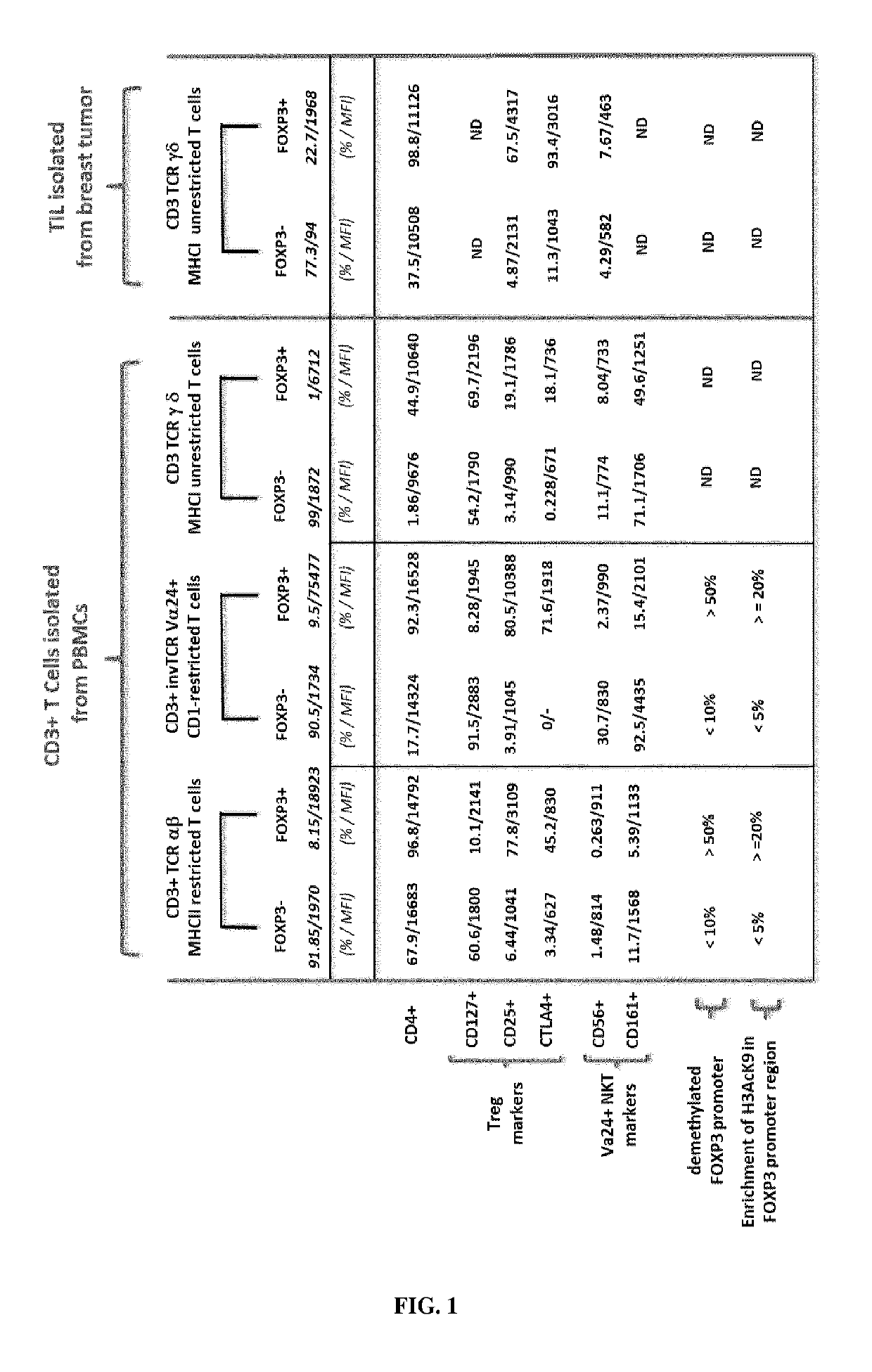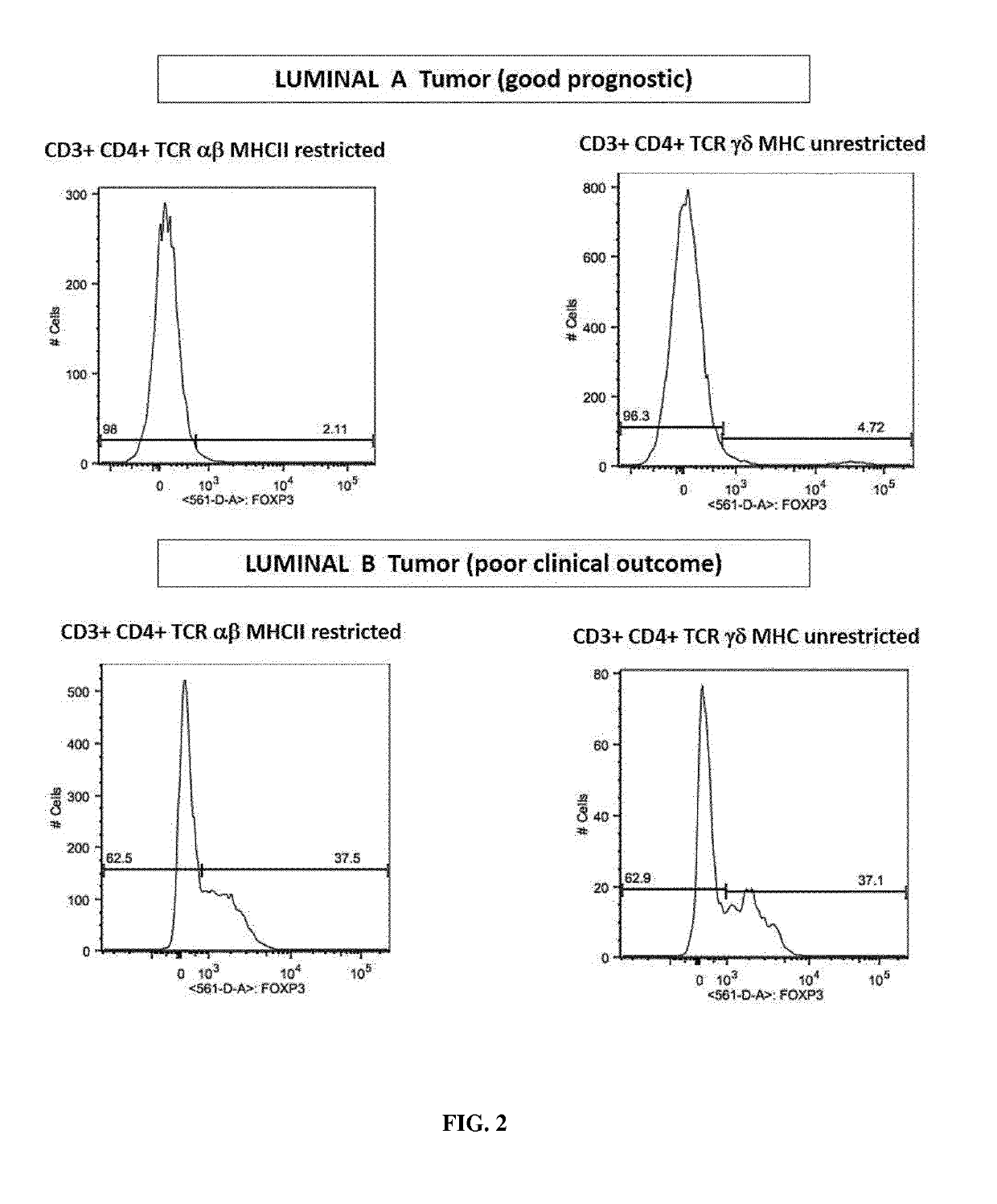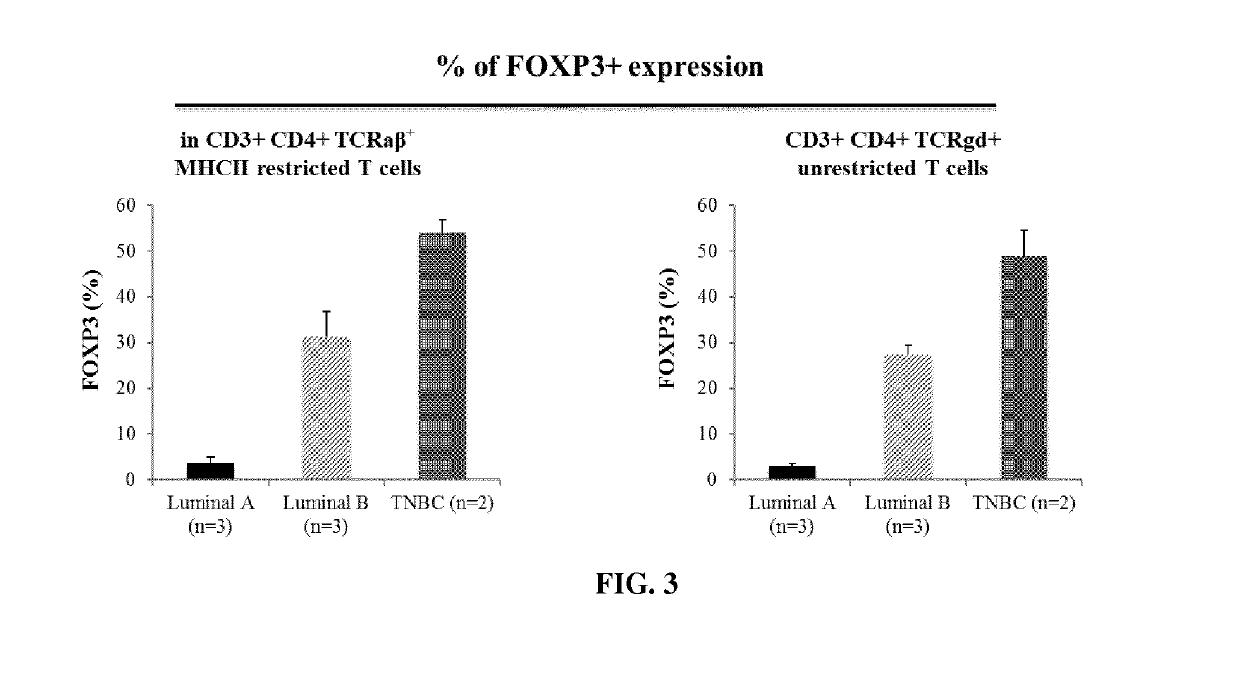Immunotherapeutic uses of ex vivo generated foxp3+ regulatory t cells
a technology of regulatory t cells and ex vivo, which is applied in the direction of antibody medical ingredients, drug compositions, immunological disorders, etc., can solve the problems of ineffective anti-metastasis through disseminated tumor cells, interruption of immune checkpoints with mabs, and none of these vaccines have been reported to be effective, so as to slow down or stop the progression of one or more symptoms, delay or prevent the onset of the disease, and improve the effect of symptoms
- Summary
- Abstract
- Description
- Claims
- Application Information
AI Technical Summary
Benefits of technology
Problems solved by technology
Method used
Image
Examples
examples
[0456]The present invention is further illustrated by the following examples.
[0457]Materials and Methods
[0458]Human Blood Sample.
[0459]Blood samples from healthy individuals originated from Etablissement Francais du Sang (EFS, Paris). Blood cells are collected using standard procedures.
[0460]Human Tumor Sample.
[0461]Tumor tissue sample originated from patient with luminal A and Luminal B Breast cancer (Institut Jean Godinot, Reims).
[0462]Cell Purification and Culture.
[0463]Peripheral blood mononuclear cells (PBMCs) are isolated by density gradient centrifugation on Ficoll-Hypaque (Pharmacia). PBMCs are used either as fresh cells or stored frozen in liquid nitrogen. T-cell subsets and T cell-depleted accessory cells (ΔCD3 cells) are isolated from either fresh or frozen PBMCs. T cell-depleted accessory cells (ΔCD3 cells) are isolated by negative selection from PBMCs by incubation with anti-CD3-coated Dynabeads (Dynal Biotech) and are irradiated at 3000 rad (referred to as ΔCD3-feeder)...
PUM
| Property | Measurement | Unit |
|---|---|---|
| Composition | aaaaa | aaaaa |
| Immunogenicity | aaaaa | aaaaa |
Abstract
Description
Claims
Application Information
 Login to View More
Login to View More - Generate Ideas
- Intellectual Property
- Life Sciences
- Materials
- Tech Scout
- Unparalleled Data Quality
- Higher Quality Content
- 60% Fewer Hallucinations
Browse by: Latest US Patents, China's latest patents, Technical Efficacy Thesaurus, Application Domain, Technology Topic, Popular Technical Reports.
© 2025 PatSnap. All rights reserved.Legal|Privacy policy|Modern Slavery Act Transparency Statement|Sitemap|About US| Contact US: help@patsnap.com



